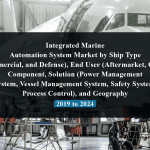OVERVIEW
The Hybrid Aircraft Market is currently valued at USD 1.2 billion in 2024 and will be growing at a CAGR of 41.6% over the forecast period to reach an estimated USD 13.2 billion in revenue in 2029. The hybrid aircraft market has emerged as a dynamic sector at the intersection of aviation and sustainable technology. These aircraft combine traditional combustion engines with electric propulsion systems, offering improved fuel efficiency and reduced emissions compared to conventional aircraft. With a growing emphasis on environmental sustainability and the need to mitigate the aviation industry’s carbon footprint, hybrid aircraft are increasingly gaining traction. They hold promise for applications ranging from regional transportation to aerial surveillance and cargo delivery. Additionally, advancements in battery technology and electric propulsion systems are driving innovation in this sector, fostering collaborations between aviation companies and technology firms to develop more efficient and eco-friendly hybrid aircraft solutions.
Increasing environmental concerns and stringent regulations on carbon emissions are compelling the aviation industry to adopt more sustainable technologies, making hybrid aircraft an attractive option due to their lower carbon footprint. Secondly, advancements in electric propulsion systems and battery technology are enhancing the feasibility and performance of hybrid aircraft, enabling longer flight ranges and reduced operating costs. Additionally, rising fuel prices and the need for greater fuel efficiency are incentivizing airlines and aircraft manufacturers to invest in hybrid technology to achieve operational savings. Furthermore, the growing demand for regional connectivity and urban air mobility solutions is creating opportunities for hybrid aircraft to serve as efficient and cost-effective transportation alternatives in congested urban areas.
Market Dynamics
Drivers:
Increasing environmental concerns and stringent regulations on carbon emissions are compelling the aviation industry to adopt more sustainable technologies, making hybrid aircraft an attractive option due to their lower carbon footprint. Secondly, advancements in electric propulsion systems and battery technology are enhancing the feasibility and performance of hybrid aircraft, enabling longer flight ranges and reduced operating costs. Additionally, rising fuel prices and the need for greater fuel efficiency are incentivizing airlines and aircraft manufacturers to invest in hybrid technology to achieve operational savings. Furthermore, the growing demand for regional connectivity and urban air mobility solutions is creating opportunities for hybrid aircraft to serve as efficient and cost-effective transportation alternatives in congested urban areas.
Key Opportunities :
The hybrid aircraft market presents several key opportunities for stakeholders across the aviation industry. Firstly, there is significant potential for growth in the regional transportation sector, where hybrid aircraft can offer cost-effective and environmentally friendly solutions for short to medium-haul routes, connecting underserved communities and reducing reliance on traditional airports. Secondly, the burgeoning urban air mobility (UAM) market offers a promising opportunity for hybrid aircraft to provide on-demand transportation services in densely populated areas, alleviating congestion and reducing commute times. Additionally, the increasing demand for unmanned aerial vehicles (UAVs) for applications such as surveillance, cargo delivery, and aerial photography presents opportunities for hybrid-electric propulsion systems to enhance the endurance and efficiency of these aircraft. Moreover, advancements in hydrogen fuel cell technology offer potential for zero-emission hybrid aircraft, opening up new possibilities for sustainable aviation solutions. Overall, the hybrid aircraft market is ripe with opportunities for innovation, collaboration, and market expansion across various aviation segments.
Restraints :
The high initial investment required for research, development, and manufacturing of hybrid propulsion systems and associated technologies. This can deter aircraft manufacturers and operators from transitioning to hybrid aircraft, particularly in a market where profit margins are already tight. Additionally, the limited infrastructure for electric charging and refueling stations poses a hurdle for widespread adoption of hybrid aircraft, especially in remote or underserved regions where such facilities are scarce. Furthermore, regulatory hurdles and certification processes for new propulsion technologies can delay market entry and increase development costs. Concerns about the reliability and safety of hybrid propulsion systems may also contribute to hesitancy among potential buyers. Lastly, the current limitations of battery technology, such as energy density and weight, impose constraints on the range and payload capacity of hybrid aircraft, limiting their suitability for certain applications.
Regional Information:
• In North America, the hybrid aircraft market is witnessing steady growth driven by several factors unique to the region. The stringent environmental regulations implemented by governments, particularly in the United States and Canada, are propelling the demand for more sustainable aviation solutions. With a strong emphasis on reducing carbon emissions, hybrid aircraft offer a promising opportunity to meet these regulatory requirements while maintaining operational efficiency. Moreover, the region’s expansive geography, characterized by vast remote areas and island communities, creates a niche market for hybrid aircraft to provide cost-effective transportation solutions where traditional infrastructure is limited. Additionally, the growing interest in urban air mobility (UAM) in cities like Los Angeles, New York, and Toronto presents opportunities for hybrid aircraft to serve as efficient and environmentally friendly modes of intra-city transportation, alleviating congestion and reducing travel times.
• In Europe, the hybrid aircraft market is experiencing significant growth driven by the region’s commitment to reducing carbon emissions and fostering sustainable transportation solutions. With stringent environmental regulations and increasing public awareness of climate change, there is a growing demand for greener alternatives in the aviation sector. European countries, including Germany, France, and the Netherlands, are investing heavily in research and development of hybrid aircraft technologies, positioning themselves as leaders in the industry. Furthermore, Europe’s dense urban areas and network of regional airports provide an ideal environment for hybrid aircraft to address challenges related to congestion and connectivity.
• The Asia Pacific region, there is a strong emphasis on sustainable development and reducing air pollution, driving the adoption of hybrid aircraft. Countries like China, Japan, and India, with their rapidly growing aviation markets, are investing in hybrid aircraft technology to meet the increasing demand for air travel while minimizing environmental impact.
Recent Developments:
• In June 2023, Airbus and STMicroelectronics a global semiconductor leader serving customers across the spectrum of electronics applications, have signed an agreement to cooperate on power electronics Research & Development to support more efficient and lighter power electronics, essential for future hybrid-powered aircraft and full-electric urban air vehicles.
• In June 2023, Embraer and GKN Aerospace announced a collaboration agreement on cutting-edge hydrogen technological development programs. The agreement aims to accelerate the implementation of hydrogen technologies in aviation, reducing emissions and paving the way for a more sustainable future. The collaboration will also explore the potential for a hydrogen flight demonstrator. The agreement is part of Embraer’s commitment to the global efforts to collaborate with the Air Transport industry’s commitment to achieve net zero carbon by 2050.
Key Market Players:
Boeing, Airbus, Textron Aviation, Bye Aerospace, and Zunum Aero.
Frequently Asked Questions
1) What is the projected market value of the Hybrid Aircraft Market ?
– The Hybrid Aircraft Market is expected to reach an estimated value of USD 13.2 billion in revenue by 2029.
2) What is the estimated CAGR of the Hybrid Aircraft Market over the 2024 to 2029 forecast period?
– The CAGR is estimated to be 41.6% for the Hybrid Aircraft Market over the 2024 to 2029.
3) Who are the key players in the Hybrid Aircraft Market ?
– Boeing, Airbus, Textron Aviation, Bye Aerospace, and Zunum Aero.
4) What are the drivers for the Hybrid Aircraft Market ?
– The aviation industry is adopting sustainable technologies like hybrid aircraft due to environmental concerns, electric propulsion systems, and battery technology. Rising fuel prices and demand for regional connectivity and urban air mobility solutions are also driving investment in hybrid technology.
5) What are the restraints and challenges in the Hybrid Aircraft Market ?
– High initial investment for hybrid propulsion systems, limited infrastructure for electric charging and refueling stations, regulatory hurdles, safety concerns, and battery technology limitations can deter aircraft manufacturers and operators from adopting hybrid aircraft due to tight profit margins, limited infrastructure, regulatory hurdles, and potential hesitancy due to battery technology limitations.
6) What are the key applications and offerings of the Hybrid Aircraft Market ?
– Hybrid aircraft are finding key applications in regional transportation, offering cost-effective and environmentally friendly solutions for short to medium-haul routes. They are also poised to revolutionize urban air mobility, providing efficient intra-city transportation options to alleviate congestion. Additionally, hybrid aircraft play a vital role in unmanned aerial vehicles (UAVs), enhancing endurance and efficiency for applications such as surveillance and cargo delivery.
7) Which region is expected to drive the market for the forecast period?
– North America is expected to have the highest market growth from 2024 to 2029
Why Choose Us?
Insights into Market Trends: Global Market Studies reports provide valuable insights into market trends, including market size, segmentation, growth drivers, and market dynamics. This information helps clients make strategic decisions, such as product development, market positioning, and marketing strategies.
Competitor Analysis: Our reports provide detailed information about competitors, including their market share, product offerings, pricing, and competitive strategies. This data can be used to inform competitive strategies and to identify opportunities for growth and expansion.
Industry Forecasts: Our reports provide industry forecasts, which will inform your business strategies, such as investment decisions, production planning, and workforce planning. These forecasts can help you to prepare for future trends and to take advantage of growth opportunities.
Access to Industry Experts: Our solutions include contributions from industry experts, including analysts, consultants, and subject matter experts. This access to expert insights can be valuable for you to understand the market.
Time and Cost Savings: Our team at Global Market Studies can save you time and reduce the cost of conducting market research by providing comprehensive and up-to-date information in a single report, avoiding the need for additional market research efforts.












